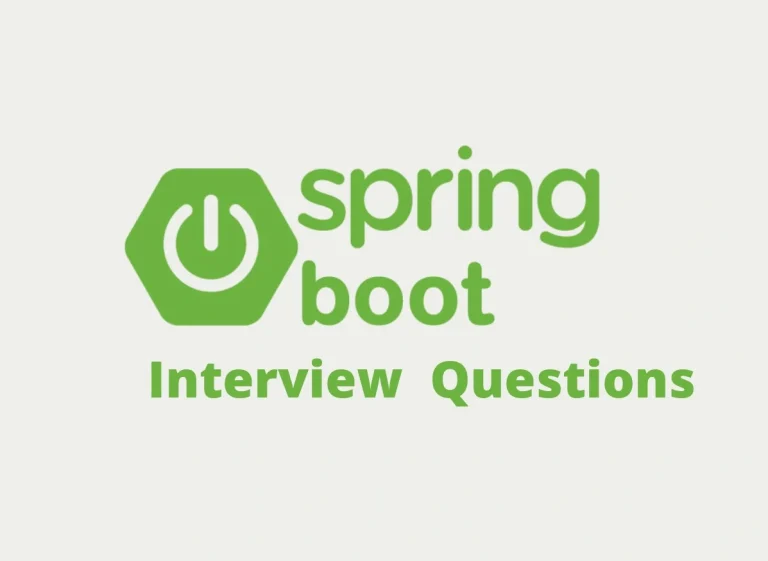Kafka + Spring Boot Integration
Apache Kafka is a powerful tool for handling real-time data streams in distributed systems. Integrating Kafka with Spring Boot enables developers to comfortably implement messaging solutions with a simple yet powerful programming model. From adding the required dependencies to implementing producers and consumers, this guide simplifies the process for you.
This article covers the essentials of Kafka + Spring Boot integration, including dependency management, producer and consumer creation, using @KafkaListener, and configuration examples. Along the way, we’ll provide code snippets, official documentation links, and external references to ensure a deeper understanding.
Table of Contents
- Introduction to Kafka and Spring Boot
- Adding Kafka Dependencies
- Writing Producer and Consumer Beans
- Using @KafkaListener
- Configuration Examples
- External Support Resources
- Final Thoughts
Introduction to Kafka and Spring Boot
Before jumping into implementation, it’s helpful to understand the basics.
- Apache Kafka is an open-source event streaming platform primarily used for building real-time data pipelines and streaming applications. It allows you to publish and subscribe to streams of data. More about it can be found on Apache Kafka’s Wikipedia page.
- Spring Boot is a framework built on Spring, simplifying development by eliminating boilerplate configurations. Spring Kafka is an extension of Spring for seamlessly integrating your Spring Boot applications with Kafka.
Why use Kafka with Spring Boot? The Spring Kafka module provides abstractions and utilities for Kafka producers and consumers, reducing development complexity.
For official documentation on Spring Kafka, refer to the Spring Kafka project page.
Adding Kafka Dependencies
To begin Kafka integration, you need to add the required Maven or Gradle dependencies for Kafka and Spring Kafka in your project.
Maven Dependencies
Add the following dependencies to your pom.xml file:
<dependency>
<groupId>org.springframework.boot</groupId>
<artifactId>spring-boot-starter</artifactId>
</dependency>
<dependency>
<groupId>org.springframework.kafka</groupId>
<artifactId>spring-kafka</artifactId>
</dependency>
Gradle Dependencies
If you’re using Gradle, include these in your build.gradle file:
implementation 'org.springframework.boot:spring-boot-starter'
implementation 'org.springframework.kafka:spring-kafka'
Make sure you’ve installed Kafka on your system or have access to a Kafka server. Instructions for setting up Kafka can be found in the Kafka Quickstart Guide.
Writing Producer and Consumer Beans
To interact with Kafka topics, you need to set up producers (to send messages) and consumers (to receive messages).
Writing a Kafka Producer
A Kafka producer sends data to specified topics. Below is an example of a simple producer configuration file in Spring Boot:
@Configuration
public class KafkaProducerConfig {
@Bean
public ProducerFactory<String, String> producerFactory() {
Map<String, Object> configs = new HashMap<>();
configs.put(ProducerConfig.BOOTSTRAP_SERVERS_CONFIG, "localhost:9092");
configs.put(ProducerConfig.KEY_SERIALIZER_CLASS_CONFIG, StringSerializer.class);
configs.put(ProducerConfig.VALUE_SERIALIZER_CLASS_CONFIG, StringSerializer.class);
return new DefaultKafkaProducerFactory<>(configs);
}
@Bean
public KafkaTemplate<String, String> kafkaTemplate() {
return new KafkaTemplate<>(producerFactory());
}
}
The above code defines the configuration for a Kafka producer, specifying the broker address (localhost:9092), key serializer, and value serializer.
Writing a Kafka Consumer
Consumers subscribe to topics and process incoming messages. Here’s how you can define a consumer in Spring Boot:
@Configuration
public class KafkaConsumerConfig {
@Bean
public ConsumerFactory<String, String> consumerFactory() {
Map<String, Object> configs = new HashMap<>();
configs.put(ConsumerConfig.BOOTSTRAP_SERVERS_CONFIG, "localhost:9092");
configs.put(ConsumerConfig.GROUP_ID_CONFIG, "group_id");
configs.put(ConsumerConfig.KEY_DESERIALIZER_CLASS_CONFIG, StringDeserializer.class);
configs.put(ConsumerConfig.VALUE_DESERIALIZER_CLASS_CONFIG, StringDeserializer.class);
return new DefaultKafkaConsumerFactory<>(configs);
}
@Bean
public ConcurrentKafkaListenerContainerFactory<String, String> kafkaListenerContainerFactory() {
ConcurrentKafkaListenerContainerFactory<String, String> factory =
new ConcurrentKafkaListenerContainerFactory<>();
factory.setConsumerFactory(consumerFactory());
return factory;
}
}
Here, group_id specifies the consumer group ID, and deserializers are configured to process incoming key-value pairs.
Using @KafkaListener
Spring Kafka provides a powerful annotation, @KafkaListener, to define methods that handle messages received from Kafka topics.
Here’s an example of how to use @KafkaListener:
@Service
public class KafkaConsumerService {
@KafkaListener(topics = "myTopic", groupId = "group_id")
public void consume(String message) {
System.out.println("Consumed message: " + message);
}
}
This listener subscribes to the myTopic topic and prints received messages to the console. You can add more logic here to process the messages as needed.
Sending Messages Using KafkaTemplate
To send messages to Kafka topics, you can use the KafkaTemplate bean we created earlier. Example usage:
@RestController
@RequestMapping("/kafka")
public class KafkaProducerController {
private final KafkaTemplate<String, String> kafkaTemplate;
public KafkaProducerController(KafkaTemplate<String, String> kafkaTemplate) {
this.kafkaTemplate = kafkaTemplate;
}
@PostMapping("/publish")
public String publishMessage(@RequestParam String message) {
kafkaTemplate.send("myTopic", message);
return "Message Published";
}
}
This example demonstrates a REST API to publish messages to the myTopic topic.
Configuration Examples
Kafka Application Properties
Define Kafka configurations in application.properties or application.yml for better manageability:
application.properties:
spring.kafka.bootstrap-servers=localhost:9092
spring.kafka.consumer.group-id=group_id
spring.kafka.consumer.auto-offset-reset=earliest
spring.kafka.producer.key-serializer=org.apache.kafka.common.serialization.StringSerializer
spring.kafka.producer.value-serializer=org.apache.kafka.common.serialization.StringSerializer
spring.kafka.consumer.key-deserializer=org.apache.kafka.common.serialization.StringDeserializer
spring.kafka.consumer.value-deserializer=org.apache.kafka.common.serialization.StringDeserializer
These properties cover both producer and consumer configurations for common use cases.
External Support Resources
Final Thoughts
Integrating Kafka with Spring Boot unlocks powerful messaging capabilities, allowing for scalable and fault-tolerant applications. By combining Kafka’s robustness with Spring Boot’s simplicity, you can efficiently implement real-time messaging in your systems.
This article provided a hands-on approach to adding dependencies, configuring producers and consumers, using @KafkaListener, and setting up your application with ease. Bookmark this guide as a reference for building your next data-driven application!



